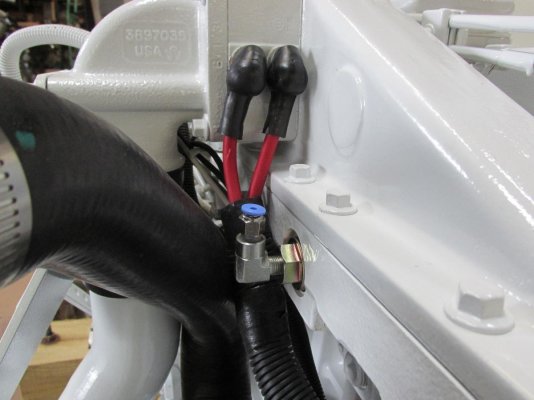BDofMSP
Guru
- Joined
- Sep 5, 2013
- Messages
- 905
- Location
- USA
- Vessel Name
- Gopher Broke
- Vessel Make
- Silverton 410 Sport Bridge
Odd question.
I need to adapt an M22 x 1.5 hole in my manifold to hold a 1/4" NPT stainless turbo boost pressure sensor. I have limited clearance and need to adapt to a 90 degree, so I would prefer to use an M22 (male) to 1/4 (female) bushing, and then a 1/4 to 1/4" 90 degree adapter.
Note - this thread adapter is called a bushing but it's not what I usually think of as a bushing. But we're going with it since that's what they called it. It's just a thread adapter.
I can find that bushing, but only in carbon steel. The 90 adapter is brass. Again the sensor is stainless.
I can find the bushing in brass, but only M22 to 1/8". I'd have to adapt up to 1/4 and I don't know how that would impact my pressure readings.
So do I care that the bushing is carbon steel? I'm assuming that manifold is cast iron? Or would I be better off using brass, but having to adapt from 1/8" to 1/4" for the sensor?
For the visual, I'm trying to replicate this piece (which I'd buy but it's 1/8 NPT instead of 1/4).
Thanks
BD
I need to adapt an M22 x 1.5 hole in my manifold to hold a 1/4" NPT stainless turbo boost pressure sensor. I have limited clearance and need to adapt to a 90 degree, so I would prefer to use an M22 (male) to 1/4 (female) bushing, and then a 1/4 to 1/4" 90 degree adapter.
Note - this thread adapter is called a bushing but it's not what I usually think of as a bushing. But we're going with it since that's what they called it. It's just a thread adapter.
I can find that bushing, but only in carbon steel. The 90 adapter is brass. Again the sensor is stainless.
I can find the bushing in brass, but only M22 to 1/8". I'd have to adapt up to 1/4 and I don't know how that would impact my pressure readings.
So do I care that the bushing is carbon steel? I'm assuming that manifold is cast iron? Or would I be better off using brass, but having to adapt from 1/8" to 1/4" for the sensor?
For the visual, I'm trying to replicate this piece (which I'd buy but it's 1/8 NPT instead of 1/4).
Thanks
BD
Attachments
Last edited:



